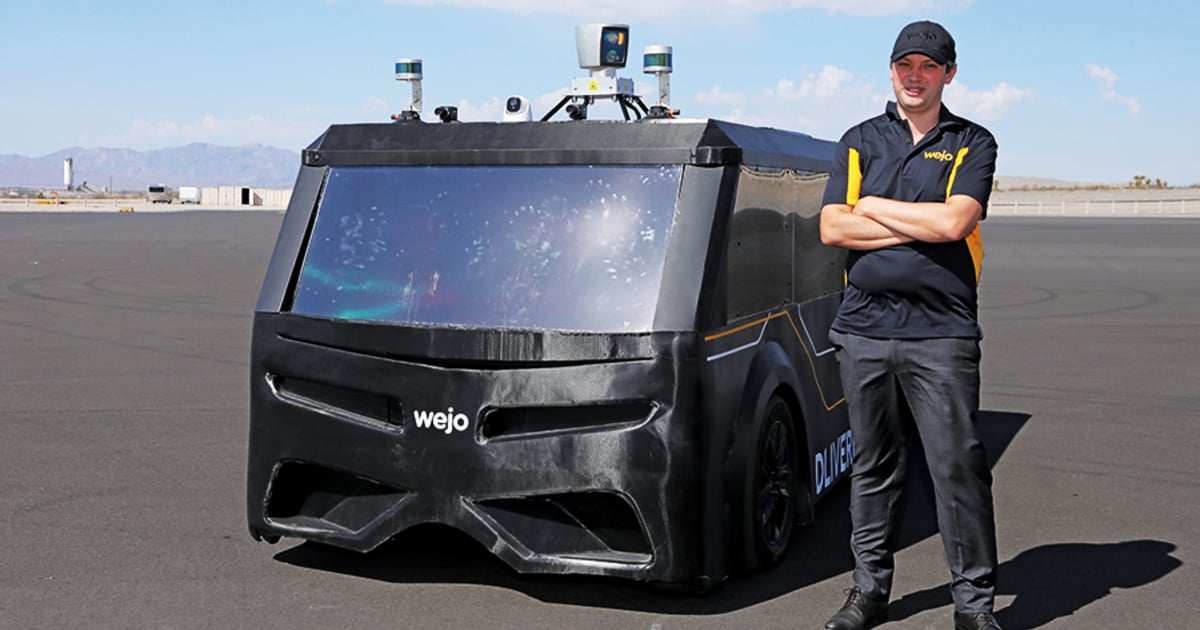
PAHRUMP, Nev. — Countless data points gathered by vehicles every day on public roads can be used to improve safety and traffic flow and speed up emergency response times.
British automotive data startup Wejo hopes to play a major role in getting the auto industry to that point by using data to learn how drivers behave in every use-case scenario.
The goal is to predict what happens “within three meters on this road at this time of day in these specific road conditions,” Wejo CEO Richard Barlow said during a demonstration of the company’s technology near Las Vegas in late September.
The Manchester-based company has collected data on vehicle and road conditions from about 19 million vehicles worldwide to date, including 85 billion drives and billions of miles driven on U.S. roadways and elsewhere.
As vehicles become more connected and offer more automated features, automakers, governments and service providers want to leverage that data to make roads safer and to make driving more efficient.
To demonstrate how, Wejo invited a group of journalists, analysts and others to a racetrack at Spring Mountain Motor Resort, about 55 miles west of Las Vegas. There, visitors drove sports cars around a new track, aiming to make each turn as smooth as possible.
After completing a lap, the drivers reviewed data such as speed, acceleration and the angles with which they made tight turns. They then received coaching from professional drivers on how to improve. The drivers headed back out to try to make smoother turns and improve lap times. Most were able to do just that, using the knowledge they gained to cut several seconds off their times.
More importantly, Wejo used the data to build a map of the track and make assumptions about lane width and the location of problem spots on the roadway or in driver behavior, executives said.
“We’ve got a unique understanding of the data we collect,” Barlow said.
The racetrack exercise served as a miniature demonstration of what companies such as Wejo could do at mass scale. Telematic control units embedded in millions of vehicles globally could tap data about each auto’s environment, diagnostics, in-cabin experiences and other factors.
The company said it has collected data on about 95 percent of U.S. roadways and can in a matter of minutes learn about specific traffic issues. For example, rather than simply recognizing that traffic has slowed down, the data can be used to make specific assumptions about in which lane a collision has created a bottleneck.
Such information would be important for the auto industry and governments as they look to reduce traffic deaths and create more efficient roadways, Barlow said.
In another example, data indicating a traffic collision could trigger variable speed limit signs to slow down drivers approaching a crash site and reduce congestion. And emergency services would be automatically alerted to the location. The emergency vehicles would have real-time access to road conditions and know the fastest way to get the scene.
Wejo is working with seven U.S. states and several municipalities to understand how the data it collects can be used to do just that, Barlow said.
Automakers are also interested in the data, according to the company. Wejo has relationships with more than 20 automakers, suppliers and fleet providers, according to the company.
Those companies are particularly interested in how that data can be used to deploy fleets of autonomous vehicles in the future, Barlow said. Data collected on a roadway over the course of years could allow an AV to know how a human driver might react to certain road conditions.
“Let’s say the autonomous vehicle is doing 23 mph and it’s raining and it’s a certain temperature, and another vehicle is coming toward it at 40 mph,” Barlow said. “We can know what might happen next.”
To demonstrate how its data can boost automakers’ AV development, Wejo built its own autonomous vehicle, which it calls DLIVEREE. The AV, made with “off-the shelf” and 3D-printed components, is intended to showcase how data can enable better vehicle-to-vehicle communication and anticipate road problems ahead of the vehicle.
“We did it to demonstrate our data, but we are not becoming Cruise or Waymo or anyone else in that market,” he said.
Barlow hopes Wejo’s AV can also help the industry accept a “common connected vehicle language” used by all automakers. Automakers are typically “doing things by themselves,” but unless vehicles of one make can communicate efficiently with those of another, the benefits of autonomous and connected driving will be limited, Barlow said.
“The incumbents are being forced to be a bit more open-minded,” he said. “They want to protect their market share, and it’s tough to figure out how to protect market share while still being cooperative with their competition.”
Leaning on a third-party data company such as Wejo could help ease those concerns because they can share vehicle data with companies without sharing IP, he said.
“The OEMs all have their own ambitions about how to improve safety on our roads, but they can’t do it in isolation,” Barlow said. “They need to work better together.”